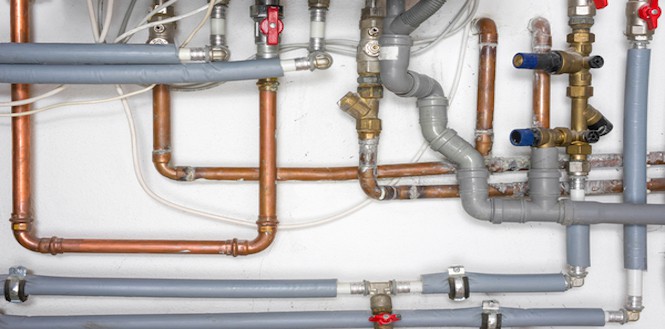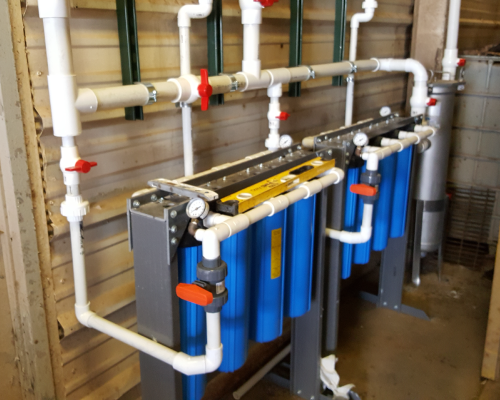How The Anatomy of Your Home's Plumbing System Matters
How The Anatomy of Your Home's Plumbing System Matters
Blog Article
The article following next in relation to Plumbing Installation 101: All You Need to Know is incredibly entertaining. Give it a try and make your own conclusions.

Comprehending just how your home's pipes system works is essential for every homeowner. From delivering clean water for drinking, cooking, and bathing to safely removing wastewater, a well-maintained plumbing system is crucial for your family's health and wellness and convenience. In this comprehensive overview, we'll discover the complex network that makes up your home's pipes and deal tips on maintenance, upgrades, and handling common concerns.
Intro
Your home's pipes system is greater than simply a network of pipelines; it's a complex system that guarantees you have access to tidy water and effective wastewater elimination. Understanding its parts and exactly how they work together can assist you protect against pricey repair work and ensure whatever runs efficiently.
Standard Components of a Pipes System
Pipes and Tubing
At the heart of your pipes system are the pipes and tubes that carry water throughout your home. These can be constructed from various products such as copper, PVC, or PEX, each with its benefits in terms of longevity and cost-effectiveness.
Components: Sinks, Toilets, Showers, etc.
Components like sinks, bathrooms, showers, and bathtubs are where water is used in your house. Understanding exactly how these fixtures attach to the plumbing system aids in identifying issues and preparing upgrades.
Shutoffs and Shut-off Factors
Shutoffs manage the flow of water in your pipes system. Shut-off valves are essential during emergencies or when you require to make repair services, enabling you to isolate parts of the system without interfering with water circulation to the whole home.
Supply Of Water System
Key Water Line
The main water line attaches your home to the local supply of water or an exclusive well. It's where water enters your home and is dispersed to various components.
Water Meter and Stress Regulator
The water meter actions your water usage, while a pressure regulatory authority guarantees that water moves at a secure pressure throughout your home's pipes system, protecting against damage to pipes and components.
Cold Water vs. Hot Water Lines
Recognizing the distinction in between cold water lines, which supply water straight from the main, and warm water lines, which carry heated water from the water heater, assists in troubleshooting and preparing for upgrades.
Drainage System
Drain Piping and Traps
Drain pipes bring wastewater away from sinks, showers, and bathrooms to the drain or septic tank. Traps stop sewer gases from entering your home and likewise catch debris that can cause blockages.
Air flow Pipelines
Air flow pipelines permit air into the drain system, protecting against suction that could reduce water drainage and cause catches to empty. Appropriate air flow is important for keeping the integrity of your pipes system.
Importance of Proper Drainage
Making sure correct water drainage prevents back-ups and water damages. Frequently cleansing drains pipes and maintaining traps can avoid expensive repair services and expand the life of your pipes system.
Water Heater
Kinds Of Hot Water Heater
Hot water heater can be tankless or typical tank-style. Tankless heating systems warmth water as needed, while containers store heated water for instant usage.
Just How Water Heaters Connect to the Plumbing System
Understanding exactly how hot water heater attach to both the cold water supply and hot water distribution lines assists in identifying concerns like insufficient hot water or leaks.
Maintenance Tips for Water Heaters
On a regular basis flushing your hot water heater to get rid of debris, checking the temperature setups, and inspecting for leaks can prolong its life expectancy and boost power performance.
Common Plumbing Issues
Leakages and Their Causes
Leakages can take place due to maturing pipelines, loose installations, or high water pressure. Dealing with leakages without delay prevents water damage and mold and mildew development.
Clogs and Obstructions
Clogs in drains and bathrooms are usually caused by flushing non-flushable products or a build-up of oil and hair. Making use of drainpipe displays and being mindful of what goes down your drains can stop obstructions.
Indicators of Plumbing Problems to Expect
Low tide pressure, slow drains, foul odors, or uncommonly high water expenses are indicators of prospective pipes issues that need to be resolved promptly.
Plumbing Maintenance Tips
Regular Examinations and Checks
Set up yearly plumbing inspections to catch issues early. Look for signs of leaks, corrosion, or mineral build-up in taps and showerheads.
Do It Yourself Upkeep Tasks
Straightforward jobs like cleansing tap aerators, checking for bathroom leaks using dye tablets, or insulating exposed pipes in cold climates can stop significant plumbing problems.
When to Call an Expert Plumbing
Know when a plumbing issue requires specialist know-how. Attempting complicated fixings without appropriate knowledge can lead to even more damage and greater repair service costs.
Upgrading Your Pipes System
Factors for Updating
Upgrading to water-efficient fixtures or replacing old pipelines can enhance water quality, lower water expenses, and increase the worth of your home.
Modern Plumbing Technologies and Their Advantages
Check out modern technologies like smart leakage detectors, water-saving commodes, and energy-efficient water heaters that can conserve cash and reduce ecological influence.
Cost Factors To Consider and ROI
Determine the ahead of time expenses versus long-term cost savings when considering pipes upgrades. Numerous upgrades pay for themselves via decreased utility costs and fewer fixings.
Environmental Influence and Preservation
Water-Saving Fixtures and Devices
Installing low-flow taps, showerheads, and toilets can substantially reduce water use without giving up performance.
Tips for Decreasing Water Use
Easy behaviors like dealing with leaks quickly, taking shorter showers, and running complete loads of laundry and meals can save water and reduced your energy costs.
Eco-Friendly Plumbing Options
Consider sustainable pipes materials like bamboo for flooring, which is durable and environmentally friendly, or recycled glass for counter tops.
Emergency situation Preparedness
Steps to Take Throughout a Pipes Emergency situation
Know where your shut-off shutoffs are located and how to turn off the water system in case of a ruptured pipeline or major leak.
Relevance of Having Emergency Situation Calls Handy
Keep call details for local plumbing technicians or emergency situation services easily offered for fast feedback during a plumbing dilemma.
Do It Yourself Emergency Situation Fixes (When Applicable).
Short-lived fixes like making use of air duct tape to spot a leaking pipe or putting a container under a dripping faucet can minimize damage up until an expert plumbing professional gets here.
Verdict.
Recognizing the anatomy of your home's pipes system encourages you to maintain it effectively, conserving money and time on repairs. By following regular upkeep regimens and remaining educated concerning modern-day pipes modern technologies, you can guarantee your plumbing system operates efficiently for many years to come.
Exploring Your Homes Plumbing Anatomy
Water Supply System
Main Water Line: This is where water enters your home from the municipal supply or a private well.
Water Meter: Typically located near where the main water line enters the property, it measures the amount of water used.
Shutoff Valve: It s crucial to know where this is in case of emergencies. It allows you to turn off the water supply to the entire house.
Pipes and Fittings: These distribute water throughout your home. Materials can include copper, PVC, or PEX.
Drain-Waste-Vent (DWV) System
Drains: Located in sinks, showers, and tubs, these carry wastewater away.
Traps: U-shaped pipes under sinks that hold standing water, blocking sewer gases from entering the home.
Vents: Pipes that lead from the DWV system to the outside, preventing vacuum formation and allowing gases to escape.
Sewer Line: Carries all wastewater from the home to the municipal sewer system or a septic tank.
Fixtures and Appliances
Sinks, Toilets, and Showers
Dishwashers and Washing Machines
Water Heaters
Maintenance Tips
Regularly check for leaks in exposed pipes and around fixtures.
Inspect the water heater annually for signs of wear.
Clean drains and traps to prevent clogs and odors.
Know how to shut off water to individual fixtures.
When to Call a Professional
Major leaks or burst pipes
Installation of new pipes or fixtures
Septic tank issues
Remodeling projects that involve plumbing changes
Conclusion
Understanding the anatomy of your home's plumbing is key to maintaining a functional and efficient system. Regular checks and knowing when to call in the experts can save you time, money, and stress.
https://www.mavyn.com/blog/exploring-your-homes-plumbing-anatomy

Exploring Your Homes Plumbing Anatomy
Water Supply System
Drain-Waste-Vent (DWV) System
Fixtures and Appliances
Maintenance Tips
When to Call a Professional
Conclusion
Understanding the anatomy of your home's plumbing is key to maintaining a functional and efficient system. Regular checks and knowing when to call in the experts can save you time, money, and stress.
https://www.mavyn.com/blog/exploring-your-homes-plumbing-anatomy
I'm just very eager about Anatomy of a House: Understanding the Components and I hope you appreciated our article. Are you aware of anybody else who is occupied with the topic? Feel free to share it. Thanks for your time. Please come by our blog back soon.
Recurring Service Plans Report this page